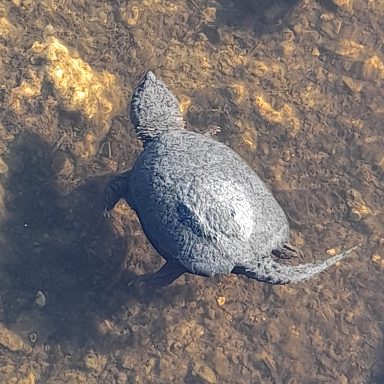

Oh, you might already know this but I just wanted to mention that there’s City Nature Challenge in May, which is also a BioBlitz run in a bunch of different places (similar to the Parks for Pollinators event in that regard).
A person interested in nature, science, sustainability, music, and videogames. I’m also on Mastodon: @glennmagusharvey@scicomm.xyz and @glennmagusharvey@sakurajima.moe
My avatar is a snapping turtle swimming in the water.


Oh, you might already know this but I just wanted to mention that there’s City Nature Challenge in May, which is also a BioBlitz run in a bunch of different places (similar to the Parks for Pollinators event in that regard).


Yeah, there’s a variety of BioBlitz events; this one just happens to be one of the bigger sets of events.
And thanks for the extra info!
Ahh, the good ol’ cotton swab, that they always say not to insert into ear canals yet people do so anyway because that’s what they use it for.


This seems promising. Though given that it seems to involve fracking (as the article implies I think?) I do have some concerns in that regard.
Of course that doesn’t mean I’m opposed to this. Decarbonizing the energy sector is probably a bigger priority for the time being, I’d say, but it’s always useful to be cautious.


FYI visiting the article may cause a ton of copies of it to be added to your navigation history, making it impossible to navigate backwards in whatever tab/window you open this in.
That said, this is still an interesting article, worth a read. Thank you for sharing it.


This is relatively new to me, so thank you for posting about it. I did want to remark a couple things in reply to what you posted:
Of course these points are in addition to the concerns over exactly what the broader ecosystem benefits of such an approach are. For example, the biodiversity profile of soil microbes and fungi – which (far as I know) aren’t intentionally chosen in this method as it currently stands – might be different between a site that’s naturally regenerated and a site in the same local biome that’s been quick-reforested this way. And there’s also open questions about how useful such spaces are to animals. Mind you, I’m not saying that the answers to these questions are negative – they may very well be positive. But they’re just potential points of future research. (Also, use by animals might be site-dependent, so if this method proves to be useful in this way it may be a decent method for re-creating wildlife corridors.)
Still, this method seems effective in delivering at least some ecosystem services, namely carbon sequestration, canopy shade, and various other benefits of simply having a stand of trees around. So it’s not useless. And given its relative “disconnection” from natural regeneration, it might be more useful for small-scale “urban afforestation” – when you wanna just get a stand of trees planted and make their own at least somewhat self-maintaining mini-ecosystem, especially on land that’s likely never gonna be allowed to undergo a natural succession process (at least not with native plants), such as small spaces in cities and suburbs. For example, here in south Florida there’s a matrix of dry land and water bodies (west of the Atlantic Coastal Ridge) artificially created from what was once part of the Everglades. There is no truly native upland habitat here, but…what can we humans do with it now that we’ve built houses and roads and stuff on it? If we plonk down a forest here, it’s not like it’s going back to how the marshland it used to be, but that doesn’t mean we shouldn’t plonk down a forest (with appropriate species choices, of course).
Speaking of wetlands, I’m also curious whether such an approach can be adapted to wetland restoration. From what I understand, processes like peat buildup are very slow, but are there ways to accelerate this with minimal ecosystem disruption, maybe even if restricted to artifically-created wetland systems?

Whoa.
I’m not sure exactly what this means for us iNat users but this seems cool.
Based on the article it seems they also got in a “generous grant” of funding to help them keep things going and developing.
Oh here’s a FAQ.
Obligatory song post: https://youtu.be/nkUOACGtGfA
(Yes, it’s Simon & Garfunkel’s “Sound of Silence”.)


Thank you for this explanation!


I noticed the PDF is available if you simply throw the article title into scholar.google.com .
Edit: Wait, it is just open-access. https://chemistry-europe.onlinelibrary.wiley.com/doi/10.1002/cssc.202300670
We humans put out so much trash on the internet; there’s always room (heh) for a wholesome detritivore joke to clean up after us.
This reminds me of a segment in some kids science show that I saw years ago, where they imagined light to travel at 55 miles per hour. The most dramatic thing that happened at the end was that the lead character, after cycling through town, met back up with his twin brother, who was now an old man.


Good gosh I’ve always hated how I often can’t reuse packaging material and/or containers for something else. I would want to but (1) I get too many of them, (2) they’re sometimes too dirty (for various reasons) to be able to reuse easily, and (3) even if I could come up with ways to reuse them I’d also have to convince people I live with.
We need to reduce the amount of stuff from further upstream, rather than just having consumers try to do all the three R’s by themselves.
Update: the city of Plantation has just added an event!
Project: City of Plantation note: only covers Plantation Preserve Linear Trail and Golf Course special event: September 9, 9am ~ 11am
Again, note that the project covers the whole month, even though the special event is on a particular day.